Where is Bundala National Park
Bundala National Park is an internationally important wintering ground for migratory waterbirds in Sri Lanka. Bundala harbors 197 species of birds, the highlight being the greater flamingo, which migrates in large flocks.
Bundala was designated a wildlife sanctuary in 1969 and redesignated to a national park on 4 January 1993.
In 1991 Bundala became the first wetland to be declared a Ramsar site in Sri Lanka. In 2005 the national park was designated as a biosphere reserve by UNESCO, the fourth biosphere reserve in Sri Lanka.
The national park is situated 245 kilometers (152 mi) southeast of Colombo.
Bundala National Park is an important wintering ground for migratory waterbirds in Sri Lanka. It was designated a wildlife sanctuary in 1969 and redesignated a national park in 1993. Bundala harbors 197 species of birds, the highlight being the greater flamingo, which migrate in large flocks.
History of Bundala National Park
The Bundala National Park area was declared a wildlife sanctuary on 5 December 1969 and was upgraded to a national park on 4 January 1993 with a land area of 6,216 hectares (24.00 sq mi).
However, the park was re-gazetted in 2004 and the original park was reduced to 3,698 hectares (14.28 sq mi). In 1991, Bundala became the first site in Sri Lanka to be designated a Ramsar wetland.
In 2005, Bundala was declared a Man and Biosphere Reserve by UNESCO. In January 2006, an area adjacent to Bundala covering an area of 3,339.38 hectares (12.8934 sq mi) was declared the Wilmanna Sanctuary.
Bundala was the first site in Sri Lanka to be designated a Ramsar wetland. In 2005, Bundala was declared a Man and Biosphere Reserve by UNESCO. An area adjacent to Bundala covering an area of 3,339.38 hectares (12.8934 sq mi) was declared as Wilmanna Sanctuary.
Physical Features of Bundala National Park
The eastern Vijayan series hornblende-biotite gneiss underpins the majority of the area.
The area has a low-country dry zone climate. The average relative humidity in the area is 80%. The national park has five shallow, brackish lagoons, three of which have salt pans.
Bundala lagoon is 520 hectares (2.0 square miles), Embilikala lagoon is 430 hectares (1.7 square miles), Malala lagoon is 650 hectares (2.5 square miles), Koholankala lagoon is 390 hectares (1.5 square miles), and Mahalewaya lagoon is 260 hectares (1.0 sq mi).
The Koholankala and Mahalewaya rivers are nearly completely developed for salt production. The climate is tropical monsoonal, with an average annual temperature of 27 °C (81 °F).
The annual rainfall ranges between 900 and 1,300 millimeters (35 and 51 inches), with a dry period lasting from May to September.
The park’s elevation ranges from sea level to 10 meters (33 ft). The park was impacted by the Indian Ocean tsunami in 2004.
The park suffered little damage as a result of the sand dunes’ protection.
The park’s elevation ranges from sea level to 10 meters (33 ft). The climate is tropical monsoonal, with an average annual temperature of 27 °C (81 °F). The Koholankala and Mahalewaya rivers are nearly completely developed for salt production.
Flora Diversity of Bundala National Park
The national park’s ecological areas include seven terrestrial habitat types and six wetland types. The most abundant plant life is dry thorny shrubs and herbs.
The park has been home to 383 plant species from 90 different families. “All of the lagoons’ phytoplankton is dominated by blue-green algae,” including Macrocystis, Nostoc, and Oscillatoria.
Hydrilla grows abundantly in the Malala-Ambilikala Lagoons. In the marshes and streams, water hyacinth, water lilies, and Typha angustifolia reed beds can be found.
Acacia scrubs dominate the vegetation, which includes Dichrostachys cinerea, Randia dumetorum, Ziziphus sp., Gymnosporia emarginata, Carissa spinarum, Capparis zeylanica, and Cassia spp, Bauhinia racemosa, Salvadora persica, Drypetes sepiaria, Manilkara hexandra (Palu in Sinhalese), and the less common Chloroxylon swietenia, Azadirachta indica, and Feronia limonia are the forest trees.
The environmental conditions of the national park are ideal for halophyte plants. Salt-tolerant plants include Salicornia brachiata and Halosarcia indica.
Lumnitzera racemosa trees are common in the Bundala lagoon area’s small degraded patch of mangrove. The Palu tree Manilkara hexandra forest on the sand dunes east of Bundala village is a one-of-a-kind forest in Sri Lanka.
The national park’s ecological areas include seven terrestrial habitat types and six wetland types. The most abundant plant life is dry thorny shrubs and herbs. Manilkara hexandra forest on the sand dunes east of Bundala village is a one-of-a-kind.
Fauna Diversity of Bundala National Park
Bundala National Park has been designated as an outstanding Important Bird Area in the wetlands of South India and Sri Lanka.
The national park is home to 324 vertebrate species, including 32 species of fish, 15 species of amphibians, 48 species of reptiles, 197 species of birds, and 32 species of mammals.
Among the invertebrates are 52 species of butterflies. Bundala’s wetland habitats support approximately 100 species of water birds, half of which are migrant birds.
58 of the 197 avifaunal species are migratory.
In 2005, the Department of Wildlife Conservation and the Field Ornithology Group of Sri Lanka collaborated to launch the National Bird Ringing Programme (NBRP) in Bundala.
The highlight is the greater flamingo Phoenicopterus roseus, which visits in large flocks of over 1,000 individuals from India’s Rann of Kutch.
Waterfowl (lesser whistling duck Dendrocygna javanica, garganey Anas querquedula), cormorants (little cormorant Phalacrocorax niger, Indian cormorant P. fuscicollis), cormorants (Indian cormorant P. fuscicollis), large water birds (grey heron Ardea cinerea, black-headed ibis Threskiornis melanocephalus, The national park is home to rare birds such as the black-necked stork Ephippiorhynchus asiaticus, the lesser adjutant Leptoptilos javanicus, and the Eurasian coot Fulica atra.
The Bundala forests are still home to a few Asian elephants (Elephas maximus).
Toque macaques are among the other mammals seen in the park. Common langur, Macaca sinica Jackal, Presbytis entellus Leopard, Canis aureus Panthera pardus, Felis viverrinus (fishing cat), Felis rubiginosa (rusty-spotted cat), and mongoose Wild boar, Herpestes spp. Mouse deer, Sus scrofa Indian muntjac, Tragulus meminna Spotted deer, Muntiacus muntjak Sambar C. Unicolor, black-naped hare Cervus axis Lepus nigricollis, Manis crassicaudata, and Hystrix indica are three species of porcupine.
Bundala is home to a variety of fish species, including saltwater dispersants Anguilla bicolor and marine forms. Brackish water forms of Ambassis gymnocephalus freshwater forms Chanos chanos, and saltwater forms Channa striata.
The herpetofauna of Bundala includes two endemic species, a toad and a snake, Bufo atukoralei and Xenochrophis asperrimus, respectively.
Crocodylus palustris, Crocodylus porosus, common monitor Varanus bengalensis, star tortoise Geochelone elegans, python Python molurus, rat snake Pytas mucosus, endemic flying snake Chrysopelea taprobana, cat snakes Boiga spp., and whip snakes Dryophis spp. are among the reptiles.
Bundala’s nearby seashore serves as a breeding ground for all five species of globally endangered sea turtles that migrate to Sri Lanka.
Bundala National Park has been designated as an outstanding Important Bird Area in the wetlands of South India and Sri Lanka. The highlight is the greater flamingo Phoenicopterus roseus, which visits in large flocks of over 1,000 individuals from India’s Rann of Kutch.
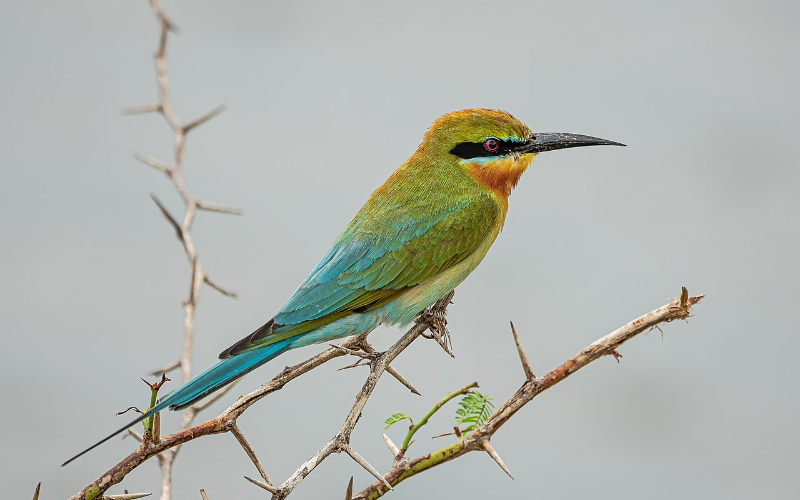
Threats and Conservation
The drainage of excess water from irrigation systems and the release of sludge from the saltern into Bundala lagoon have altered the water quality in the lagoons.
The habitats of wading birds and wildlife in the shrub forest and dunes are under threat due to the spread of two invasive alien plants, Prosopis juliflora, and Opuntia dillenii, around the tidal plains of the Malala-Ambilikala Lagoons, as well as the sand dunes and nearby scrub forests.
Uncontrolled livestock herds facilitate the spread of Prosopis juliflora.
Macaque monkeys and possibly other animals and birds that eat the fruits spread the seeds of Opuntia cactuses (called Kathu potak in Sinhala).
It is also spread by people who cut down the cactus but leave the cuttings, which re-sprout. So far, no biological control measures have been implemented for the moth Cactoblastis cactorum.
Manual removal of the cactuses will be impossible due to their extensive spread.
A turtle conservation project was launched, as well as an invasive alien plant eradication program aimed at removing Prosopis juliflora and Opuntia dillenii.
The proposed conservation measures include re-demarcation of the park’s boundary and broadening the boundary to include the northern scrubland, resettlement of families living within the park, a program to control the spread of invasive alien plants, the construction of irrigation structures to stop the flow of irrigation water, and livestock grazing management.
The Malala-Ambilikala Lagoons National Park in Sri Lanka is under threat. The habitats of birds and wildlife are under threat from the spread of invasive alien plants. Manual removal of the cactuses will be impossible due to their extensive spread.
Conclusion
In conclusion, Bundala National Park in Sri Lanka is a stunning destination that offers visitors a chance to experience the island’s natural beauty and wildlife in a unique and unforgettable way. With its diverse ecosystems, rare wildlife, and stunning coastal landscapes, this park is a must-visit destination for nature and wildlife enthusiasts alike.
At Ceylon Wild Tours, we are dedicated to helping visitors experience the very best of Sri Lanka’s natural beauty and wildlife, and Bundala National Park is certainly no exception. Our expert guides are passionate about sharing their knowledge and expertise, and ensuring that every visitor has a truly unforgettable experience.
Whether you’re interested in exploring the park’s wetlands and lagoons, spotting rare birds and reptiles, or simply taking in the stunning coastal landscapes of the area, Bundala National Park has something to offer everyone.
So why not plan your visit to Bundala National Park today and discover the wonders of this breathtaking destination? With Ceylon Wild Tours, you can rest assured that you’ll have a trip of a lifetime, filled with unforgettable memories and experiences that will last a lifetime.






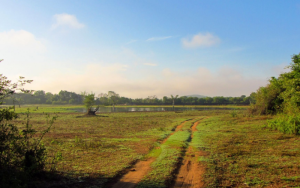
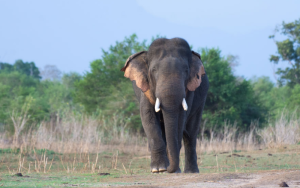
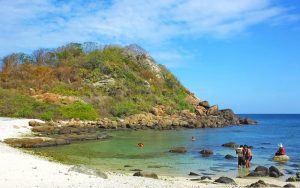
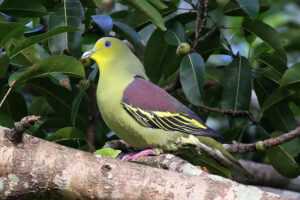


161 thoughts on “Bundala National Park | Sri Lanka”
It’s appropriate time to make some plans for the future and it is time to be happy.
I have read this post and if I could I wish to suggest you some interesting things or
advice. Maybe you can write next articles referring to this
article. I want to read more things about it!
Excellent web site. A lot of helpful information here.
I’m sending it to several buddies ans also sharing in delicious.
And of course, thanks on your effort!
This web site certainly has all of the information I wanted concerning
this subject and didn’t know who to ask.
I really like your blog.. very nice colors & theme.
Did you design this website yourself or did you hire someone to do it for you?
Plz reply as I’m looking to design my own blog and would like to find out where u got this from.
cheers
It’s my design. I used Divi theme to design this web site.
It’s appropriate time to make some plans for the future and it is time to be happy.
I have read this post and if I could I wish to suggest you few interesting things or
tips. Perhaps you could write next articles referring to
this article. I desire to read more things about it!
Hello it’s me, I am also visiting this web site daily, this site
is actually fastidious and the visitors are genuinely
sharing pleasant thoughts.
I have been exploring a little for any high-quality articles or blog posts in this sort of
house. While exploring Yahoo I finally stumbled upon this website.
Studying this info So I’m happy to convey that I have an incredibly just right uncanny feeling I found out just what I needed.
I such a lot surely will make sure to do not to put out of my mind this web site and provides it a
glance on a continuing basis.
Hi I am kavin, it’s my first time to commenting anyplace,
when I read this article I thought I could also create comments due to this good piece of writing.
I really like your blog.. very nice colors & theme. Did you
create this website yourself or did you hire someone to do it
for you? Plz respond as I’m looking to create my own blog
and would like to know where u got this from. cheers
It is not my first time to go to see this website, i am visiting this web site dailly and obtain good facts from
here all the time.
Hurrah, that’s what I was seeking for, what a material!
existing here at this webpage, thanks admin of this website.
I know this website presents quality dependent articles or reviews and other stuff,
is there any other web page which offers these data in quality?
Great blog here! Also your web site loads up very
fast! What host are you using? Can I get your affiliate link to your host?
I wish my site loaded up as fast as yours lol
Hi there, this weekend is nice in favor of me, because this occasion i am reading this
fantastic informative post here at my residence.
Good write-up. I certainly love this website.
Thanks!
Hi there everyone, it’s my first pay a quick visit at this website, and article is genuinely fruitful for me, keep up posting these types of articles or reviews.
Hi there! Do you use Twitter? I’d like to follow you if that would be okay.
I’m undoubtedly enjoying your blog and look forward to new
posts.
If someone wants an expert view regarding blogging after that I advise him/her to
visit this webpage, Keep up the fastidious job.
I think this is among the most vital information for me.
And i am glad reading your article. But want to remark on some general things, The website style is
wonderful, the articles is really excellent : D. Good job,
cheers
Excellent post. I was checking continuously this blog and I’m impressed!
Very useful info particularly the last part
🙂 I care for such information a lot. I was looking
for this certain info for a long time. Thank you and best of luck.
Great website. Lots of useful info here. I’m sending it
to some pals and additionally sharing in delicious. And
naturally, thanks for your sweat!
Woah! I’m really digging the template/theme of this website.
It’s simple, yet effective. A lot of times it’s very hard to get
that “perfect balance” between user friendliness and appearance.
I must say you’ve done a very good job with this. Also, the blog loads
very quickly for me on Internet explorer. Excellent Blog!
This is a topic that’s close to my heart… Best
wishes! Exactly where are your contact details
though?
Everything is very open with a clear clarification of the issues.
It was really informative. Your site is very useful.
Thanks for sharing!
It’s hard to come by knowledgeable people for this topic, but you sound like you know what you’re
talking about! Thanks
I think this is among the most significant info for me.
And i’m glad reading your article. But wanna remark on few general things,
The site style is ideal, the articles is really excellent : D.
Good job, cheers
Hello, everything is going well here and ofcourse every one is sharing information,
that’s really excellent, keep up writing.
I couldn’t refrain from commenting. Exceptionally well
written!
Hello, yup this piece of writing is in fact pleasant and I have
learned a lot of things from it regarding blogging. thanks.
I truly love your blog.. Pleasant colors & theme. Did you create this web
site yourself? Please reply back as I’m attempting to create my very own site and want to learn where you got this from or just what the theme
is named. Thank you!
Theme by: Theme Horse
Great blog right here! Also your site quite a bit up fast!
What host are you the usage of? Can I am getting your affiliate hyperlink in your host?
I want my web site loaded up as fast as yours lol
https://www.anrdoezrs.net/click-100543736-15082871
It’s Namecheap. If you get your hosting by clicking the above link, I’ll get a small commission
I love reading an article that can make people think.
Also, thank you for allowing for me to comment!
That is a good tip especially to those fresh to the blogosphere.
Short but very accurate info… Appreciate your sharing this one.
A must-read post!
You’ve made some really good points there. I checked on the web for more info about the issue and found most people will go
along with your views on this website.
Hmm it looks like your website ate my first comment (it
was extremely long) so I guess I’ll just sum it up
what I had written and say, I’m thoroughly enjoying
your blog. I as well am an aspiring blog blogger but
I’m still new to the whole thing. Do you have any suggestions
for first-time blog writers? I’d genuinely appreciate it.
I am genuinely thankful to the holder of this
the site who has shared this wonderful piece of writing at this time.
Aw, this was an exceptionally nice post. Finding the time
and actual effort to make a really good article… but
what can I say… I hesitate a whole lot and don’t seem
to get anything done.
I’m really impressed together with your writing skills as well as with the format of your blog.
Is this a paid theme or did you customize it yourself?
Either way, keep up the excellent quality writing, it’s uncommon to
peer a great weblog like this one these days..
Off, congratulations on this message. This is actually
truly fantastic but that is actually why you regularly crank out my good friend.
Terrific blog posts that our company can sink our teeth
right into as well as really visit function.
I love this weblog message and also you know you’re.
Blogging can easily be incredibly overwhelming for a whole
lot of folks due to the fact that there is therefore much entailed but its own like everything else.
Excellent reveal and many thanks for the reference below, wow …
Just how trendy is that?
Off to discuss this article currently, I want all those
brand-new blog writers to find that if they don’t already have a strategy 10 they do now.
Off, congratulations on this post. This is actually actually excellent however
that’s why you regularly crank out my pal. Terrific articles that our company
can easily sink our teeth in to and definitely head to work.
I adore this post and you recognize you correct. Blog writing can easily be actually quite difficult for a great deal of
individuals because there is a great deal included however its like everything else.
Every little thing takes opportunity and also all of us have the exact same volume of hrs in a day thus
put them to good usage. Our experts all have to begin somewhere and also your plan is perfect.
Excellent share and also many thanks for the reference listed
here, wow … Exactly how cool is actually that.
Off to discuss this message now, I really want all those new bloggers to see
that if they do not currently possess a program
ten they perform currently.
Great post! We will be linking to this particularly
great article on our site. Keep up the good writing.
Thanks for the marvelous posting! I truly enjoyed reading it,
you can be a great author. I will remember to bookmark
your blog and definitely will come back at some point.
I want to encourage you to definitely continue your great posts,
have a nice holiday weekend!
A lot of thanks for all your hard work on this blog. Ellie takes pleasure in setting aside time for investigations and it’s really simple to grasp why. My spouse and i hear all concerning the compelling method you deliver powerful items on this website and as well strongly encourage participation from website visitors on the area plus my princess is undoubtedly being taught so much.
Hi there! I could have sworn I’ve visited this website before but after
looking at a few of the articles I realized it’s new to me.
Regardless, I’m definitely happy I found it and I’ll be
book-marking it and checking back regularly!
This is a good tip particularly to those fresh to the blogosphere.
Short but very accurate information… Appreciate your sharing
this one. A must read article!
Thank you for any other wonderful article. The place else
may anybody get that kind of information in such
a perfect means of writing? I have a presentation subsequent week,
and I’m at the look for such info.
I’m not sure why but this site is loading extremely slow for me.
Is anyone else having this issue or is it a issue
on my end? I’ll check back later on and see if the problem still
exists.
Hello, I am very happy to come here
Hey there, You’ve done a great job. I’ll certainly digg it and personally recommend to my friends.
I am confident they’ll be benefited from this web site.
2